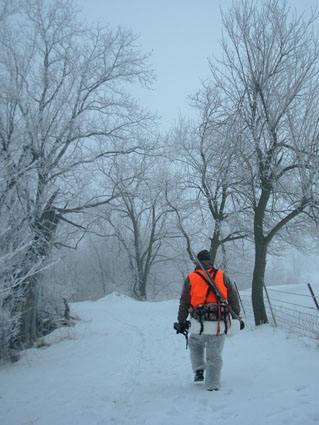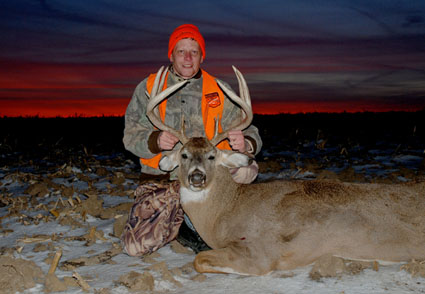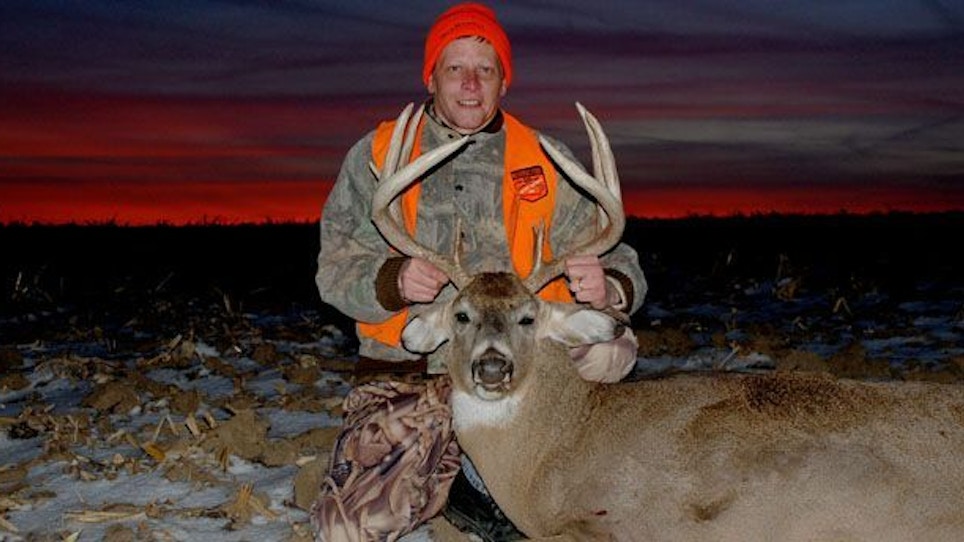 When I was a young man, there were two kinds of deer drives — those that worked, and those that didn’t. Here, the word "worked" translated into a deer or multiple deer in somebody’s truck at the conclusion of the drive. Simple as that.
When I was a young man, there were two kinds of deer drives — those that worked, and those that didn’t. Here, the word "worked" translated into a deer or multiple deer in somebody’s truck at the conclusion of the drive. Simple as that.
And as for the strategic aspects of these drives? Many I’ve been on were conducted from Point A to Point B simply because that’s the way they’ve always been done. Others involved large groups, yes literally, banging on pots and pans. Did these drives move deer? They sure as hell did; but did these same drives result in notched deer tags? To be honest — sometimes.
All too often, drives like the ones above were successful purely by luck — a right time and right place kind of chance meeting. Conversely, many of these same drives ended in failure because (1) too much of the drive’s planning was based on tradition — “I’m going to stand by the oak cause that’s where I always stand,” said Uncle Ernie — or (2), attention wasn’t paid to the details.
Deer drives can work, however, maybe it’s time to put a little more thought into those good old line-’em-up-and-have-at-’em runs through the timber, for as many an Old Man has told his young charge — old age and treachery will beat youth and enthusiasm every time. And trust me, consistently driving whitetails to the waiting gun is all about treachery.
The Drive Master
If the drivers are pawns and the standers knights, the Drive Master is king. His word is law. If he says stand, you stand. If he tells you to wait 20 minutes, you don’t start moving in 15. And if he warns you not to shoot in that 75-degree arc, you don’t shoot. I don’t care how many inches the buck has atop his head; there’s a reason why the man said don’t shoot that way.
The Drive Master’s primary responsibility is to ensure everyone’s safety. He does this by command, by command enforcement, and through his knowledge of the property being driven. True, he cannot physically be present when every trigger is pulled, nor should he have to be; however, his presence via direction and instruction should be omnipotent.
Knowledge is key to the Drive Master’s effectiveness. His knowledge of the terrain allows him to organize the movement of the drivers and the placement of the standers. The coordination of transportation, too, is his responsibility, and he will typically assign vehicle drivers and drop-off/pick-up locations prior to each push.
It’s vital the Drive Master possess leadership qualities, and then assume command of every aspect of every drive. Here, command entails delivering a concise pre-drive presentation. It doesn’t have to be formal, but complete instructions are important. Ideally, this talk will include a map, time for watches to be synchronized — NOTE: Timing is important to both success and safety — and an emphasis on compasses, even on short drives.
 Finally, command enforcement. The Drive Master must be willing to enforce his instructions, even if it means taking someone aside and speaking with them in private. Or, as I’ve seen happen in the past, removing them from the drive altogether.
Finally, command enforcement. The Drive Master must be willing to enforce his instructions, even if it means taking someone aside and speaking with them in private. Or, as I’ve seen happen in the past, removing them from the drive altogether.
The Drives
Because every situation is different, it’s impossible to state a hard-and-fast deer drive rule of thumb that applies to the physical how-to factor across the board; however, there are some guidelines that can and do apply regardless, and they can result in everyone involved seeing more deer and better bucks.
1. Appoint a Drive Master based on the profile above.
2. Don’t attempt to drive too large an area. Trying to work 100 acres with two standers and three drivers is usually an exercise in futility. Better, if your numbers are few, to cut a large block into smaller — perhaps 10 to 20 acres — sections, and work those slowly and thoroughly.
3. Go slow. Moving too quickly often frightens deer to the point where their escape routes become unpredictable or, as is often the case, forces the drivers past bucks that have learned the hunker-and-hide tactic.
4. Be quiet. Your mere presence in the timber is all that’s necessary to get most whitetails up and moving. An occasion thwack on a hickory with an old stick is okay, but leave the pots and pans back at camp.
5. Maintain a constant space between drivers, and adjust that space to the terrain. An even spacing between drivers is a safe spacing. As to adjusting the distance, 75 yards might be appropriate in the open timber while swampland might cut that to 75 feet. And while we’re at it, normal voices will suffice. No need to holler and scream (see #4).
6. Post standers based on their abilities. Is there an escape route that could present a 125-yard shot? If so, maybe the practiced hand with the scoped muzzleloader gets the nod there. Or, if it’s a short-range thicket crossing, then put the Foster-style slug man there. Here, the Drive Master needs to know not only the escape routes, but be able to match the shooting abilities of his standers to these routes. How? Pre-drive discussion.






